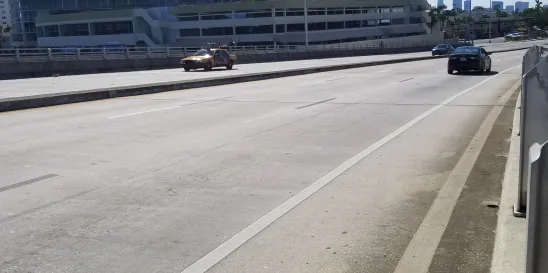The Federal Highway Administration (FHWA) recently released a prepublication version of its final rule establishing a greenhouse gas (GHG) emissions measure. The final rule establishes a method for measurement of GHG emissions associated with transportation and requires state departments of transportation (State DOTs) and metropolitan planning organizations (MPOs) that have National Highway System (NHS) routes within their jurisdiction to establish targets for reducing GHG emissions from on-road sources and to report on their efforts to meet those targets. The rule will take effect thirty days after the date of its publication in the Federal Register. State DOTs are required to establish targets and report those targets by February 1, 2024. Subsequent targets would be established and reported by no later than October 1, 2026.
In the preamble to the final rule, FHWA spent considerable effort explaining how the rule: (1) is not a mandate – because it does not impose penalties for missing targets, (2) is not unfunded – because the Infrastructure Investment and Jobs Act (IIJA) and the Inflation Reduction Act (IRA) make billions of dollars in funding available to address carbon pollution reduction, and (3) is authorized under current law – despite no specific authorization in the IIJA.
Vehicle and engine emissions have long been directly regulated by the Environmental Protection Agency and the California Air Resources Board; this rule would require infrastructure decisionmakers to consider ways to reduce CO2 emissions of road users when programming project funds.
The rule is the latest about-face in a series of rulemakings on this subject during the Obama, Trump, and Biden Administrations, and it is likely to face challenges from Members of Congress and perhaps some western states.
I. New GHG Emissions Measure
The final rule establishes a framework for assessing environmental performance on major roadways and reducing roadway-user emissions. First, the final rule creates a method for State DOTs and MPOs to measure and track GHG emissions based on percent changes in on-road tailpipe CO2 emissions. A GHG metric is used to calculate the GHG emissions measure. The GHG metric is defined as the calculation of tailpipe CO2 emissions on the mainline highways of the NHS for a given year, computed in million metric tons (mmt) and rounded to the nearest hundredth. The GHG metric formula is as follows:

Note that State DOTs must use the above metric formula, but MPOs are granted flexibility in how they calculate the GHG metric. The GHG metric is then used in the GHG emissions measure, where the GHG emissions measure is the percent change in tailpipe CO2 emissions between the current year and the reference year, computed as follows:

Though acknowledging that the GHG footprint of on-road transportation extends beyond tailpipe emissions, the preamble to the final rule maintains that addressing tailpipe emissions is less complicated and provides more reliable calculations.
Second, the final rule imposes a requirement on State DOTs and MPOs to establish 2- and 4-year targets for reducing GHG emissions from on-road sources, respectively, and report on their progress in meeting those targets. Notably, the final rule allows State DOTs and MPOs to adopt their own emissions targets. There is no requirement to achieve a specific level of reduction or a specific reduction target, only that targets be declining over time. In addition, the rule does not impose penalties on states or MPOs for failing to meet emissions targets. State DOTs and MPOs must establish and report on initial targets by February 1, 2024. Subsequent targets must be established by October 2026, and biennially thereafter.
FHWA’s October 2022 notice of proposed rulemaking (NPRM) on GHG emissions measure received over 60,000 comments, including comments from Members of Congress, State DOTs, and environmental groups, yet this final rule is largely consistent with the NPRM.
A. Justifications
This final rule is the most recent in a series of rulemakings concerning FHWA’s authority to establish GHG performance measures and require State DOTs and MPOs to set emissions targets. The final rule follows rulemakings during the Obama and Trump Administrations which reached opposite conclusions on whether FHWA had the statutory authority to regulate GHG emissions. In response to present and past concerns, FHWA maintains its final rule is consistent with its statutory authority and argues State DOTs and MPOs possess sufficient flexibility and ample funding to implement its provisions.
FHWA argues it has the statutory authority to establish a GHG emissions measure under performance management programs created by the Moving Ahead for Progress in the 21st Century Act (MAP-21) and Fixing America’s Surface Transportation Act (FAST Act). Specifically, FHWA has determined that its authority to establish performance methods and standards under 23 U.S.C. 150 extends to measurements of “environmental performance,” including GHG emissions, because measuring environmental performance supports the FHWA’s national goal (included in Section 150) of “environmental sustainability.” In making its determination, FHWA explicitly rejects its prior position adopted by the Trump Administration that establishing a GHG emissions measure was outside the scope of its statutory authority.
FHWA repeatedly makes the case for how its final rule creates a “flexible system” for implementing GHG emissions measures by permitting State DOTs and MPOs to establish their own emissions reduction targets:
The FHWA is neither requiring any specific targets nor mandating any penalties for failing to achieve these targets. The measure and the associated targets are intended only to help State DOTs and MPOs consistently and transparently monitor the current performance of the NHS, and plan transportation projects in a way that protects the long-term performance of the NHS.
In a press release accompanying the pre-publication release of the rule, FHWA highlights over $27 billion in funding from the IIJA to support carbon pollution reduction projects, as well as funding from other programs, which can support State and local governments in meeting the emissions reduction targets established under the final rule.
B. Implications
FHWA’s final rule may have significant impact on transportation policy planning, despite a lack of penalties associated with its GHG emissions targets, and its limited applicability to the small percentage of public roadways on the NHS. For example, State DOTs and MPOs – which share responsibility for developing transportation plans necessary for projects to receive federal funding – may prioritize projects which have greater emissions reduction potential, such as transit projects and bike and pedestrian infrastructure, to demonstrate progress towards declining emissions targets. Applicants for discretionary transportation funding may also leverage emissions reduction potential to secure state and federal support for projects. Because the rule is prospective in its operation, projects on the NHS that have already been approved for federal-aid highway funding are unlikely to be revisited. However, because the final rule provides significant flexibility, implementation is likely to vary between states. California and Colorado have already established requirements for GHG emission reduction targets without a federal rule of this nature in place. FHWA’s new rule risks disrupting state programs and policy planning.
Critics of the final rule also note that some states, particularly rural and western states, lack the ability to significantly reduce tailpipe CO2 emissions through transportation planning or to defer new highway construction and highway maintenance projects. For example, several State DOTs have highlighted that residents in rural states must travel greater distances to access basic services, resulting in increased measures of GHG emissions based on FHWA’s proposed metrics. In addition, opponents to the rule stressed that rural states have fewer opportunities to meet emissions reduction targets because rural states lack viable opportunities to use the most obvious tools to reduce emissions on federal-aid highways, like mode shifts to transit, incentives for electric vehicle adoption, or congestion reduction measures.
II. Potential Challenges to the Final Rule
A. Congressional Review Act
This final rule may quickly face challenges by Members of Congress. In October 2022, Senate Environment and Public Works (EPW) Committee Ranking Member Shelley Moore Capito (R-WV) and Transportation and Infrastructure Subcommittee Ranking Member Kevin Cramer (R-ND) led a letter from 26 Senate Republicans to FHWA opposing the Biden Administration’s NPRM. Following publication of the final rule, Ranking Members Capito and Cramer also issued statements opposing the final rule, arguing the Biden Administration lacks authority to require State DOTs and MPOs to establish emissions reduction targets and noting Congress considered and declined to provide explicit authority for FHWA to require emissions reductions targets in the IIJA.
Ranking Member Cramer also highlighted his pledge to offer a joint resolution of disapproval of the final rule under the Congressional Review Act (CRA), legislation that provides Congress with special procedures to overturn certain agency rules. While President Biden would ultimately veto a joint resolution overturning the final rule, a resolution may gather sufficient bipartisan support in the Senate for passage, including by key IIJA sponsors such as Senators Joe Manchin (D-WV), Jon Tester (D-MT), and Kyrsten Sinema (I-AZ), and could also be adopted by the Republican-led House of Representatives.
B. Legal Challenges
FHWA’s final rule may also face legal challenges by some states. Notably, the state transportation departments of Idaho, Montana, North Dakota, South Dakota, and Wyoming submitted joint comments to the NPRM challenging FHWA’s authority to promulgate the proposed rule, arguing FHWA lacked the statutory authority to address GHG emissions through performance management measures. The states challenged FHWA’s interpretation of its authority of Section 150. States have also argued that FHWA’s authority to assess on-road mobile source emissions is limited to carrying out the longstanding Congestion Mitigation and Air Quality (CMAQ) program under 23 U.S.C. 149, whose list of targeted pollutants has never included GHG (CO2).
The final rule’s fast-approaching February 1, 2024, deadline to establish initial emissions reductions targets may also prompt states to initiate challenges to the rule. Such challenges are more likely from State DOTs and MPOs that do not currently track GHG emissions, face additional hurdles to establishing GHG emissions mechanisms required by the rule, or favor highway projects over transit, electric vehicle, or ridesharing projects.
III. Conclusion
The final rule is consistent with the Biden Administration’s climate goals. The transportation sector represents the largest source of CO2 emissions in the US, with on road sources comprising 80% of those emissions. President Biden’s Department of Transportation sees a clear and direct nexus between reducing tailpipe emissions and mitigating the effects of climate change. This final rule thrusts state and local decisionmakers into that equation with the very limited tool of infrastructure project selection to help reduce emissions. While states will not be directly penalized for failing to meet their GHG targets, the rule could raise concerns that states with the most ambitious emissions targets will receive favorable consideration in discretionary grant applications to the Department, among other secondary impacts. As a result, this rule has both the short- and long-term potential to redirect billions of dollars in federal surface transportation funding in the years ahead.







 />i
/>i

